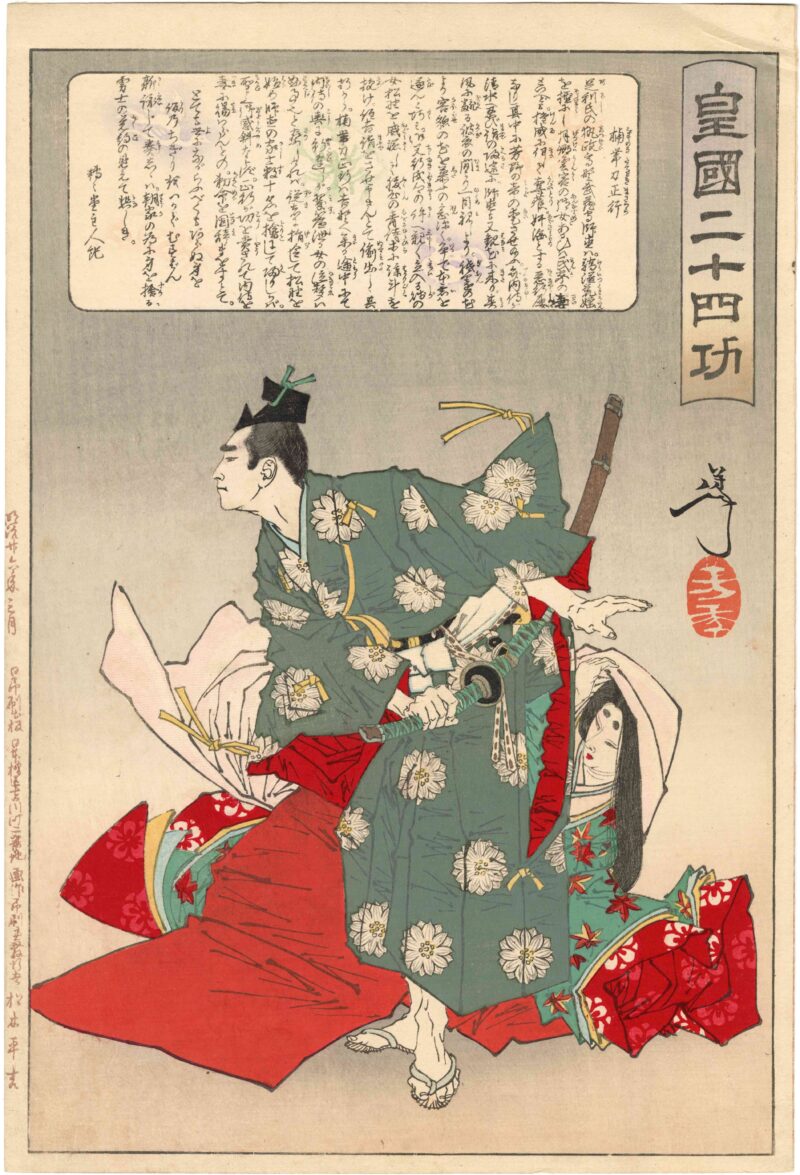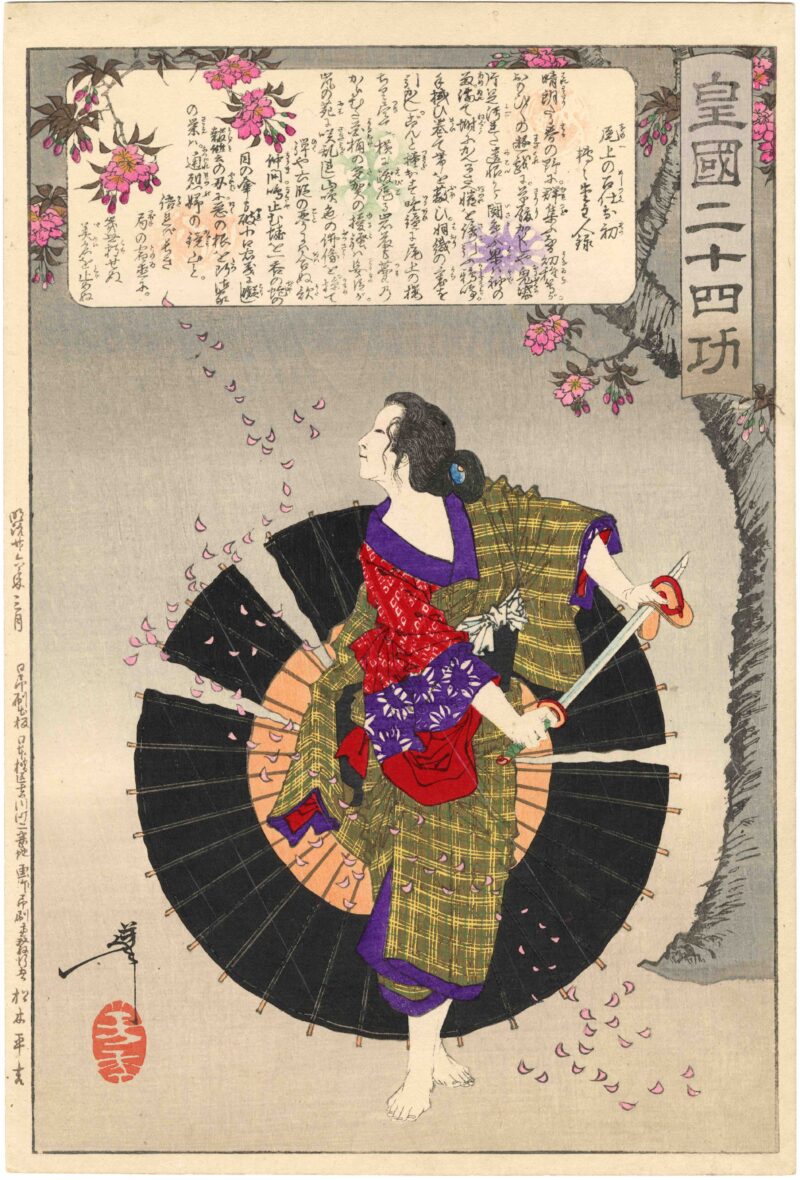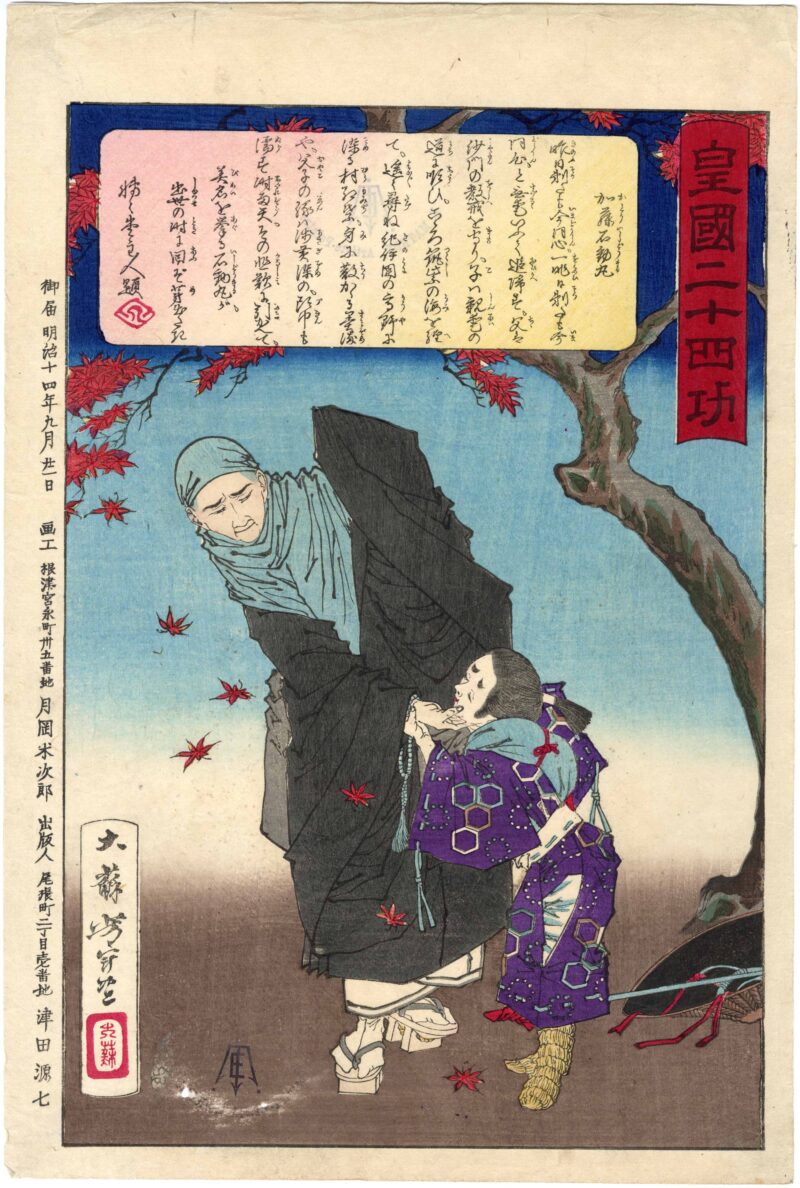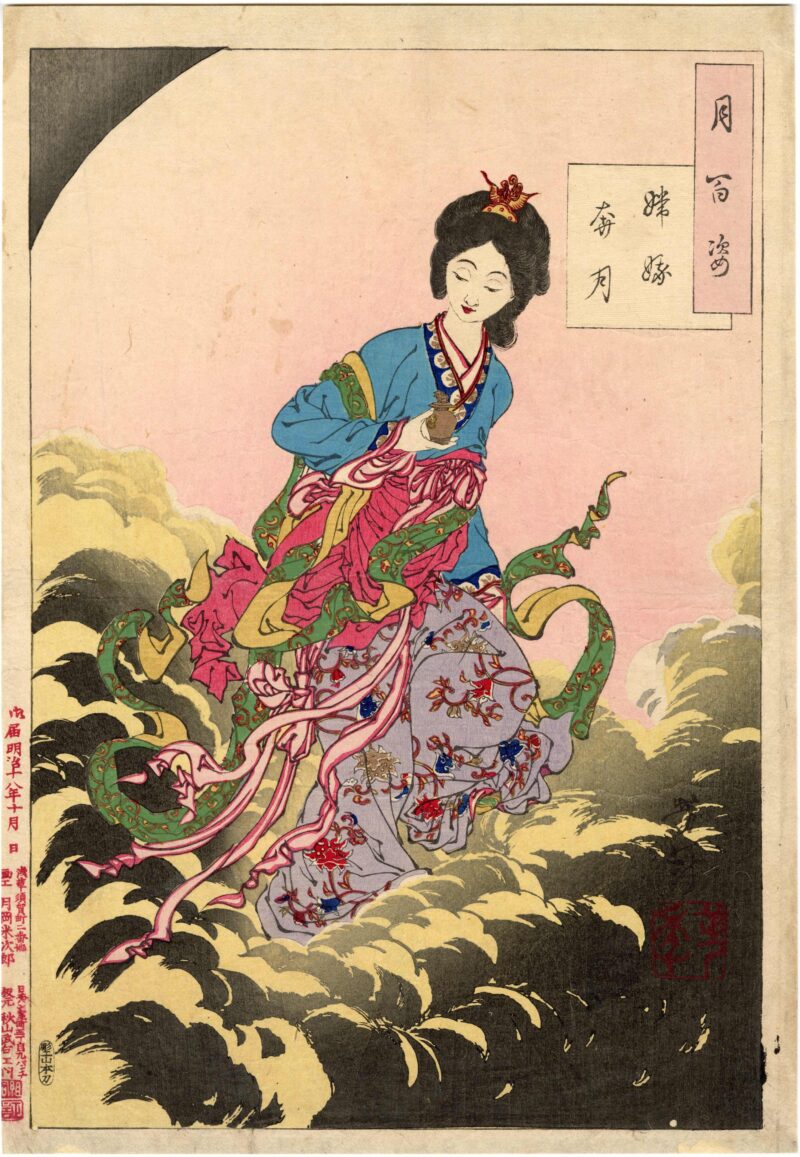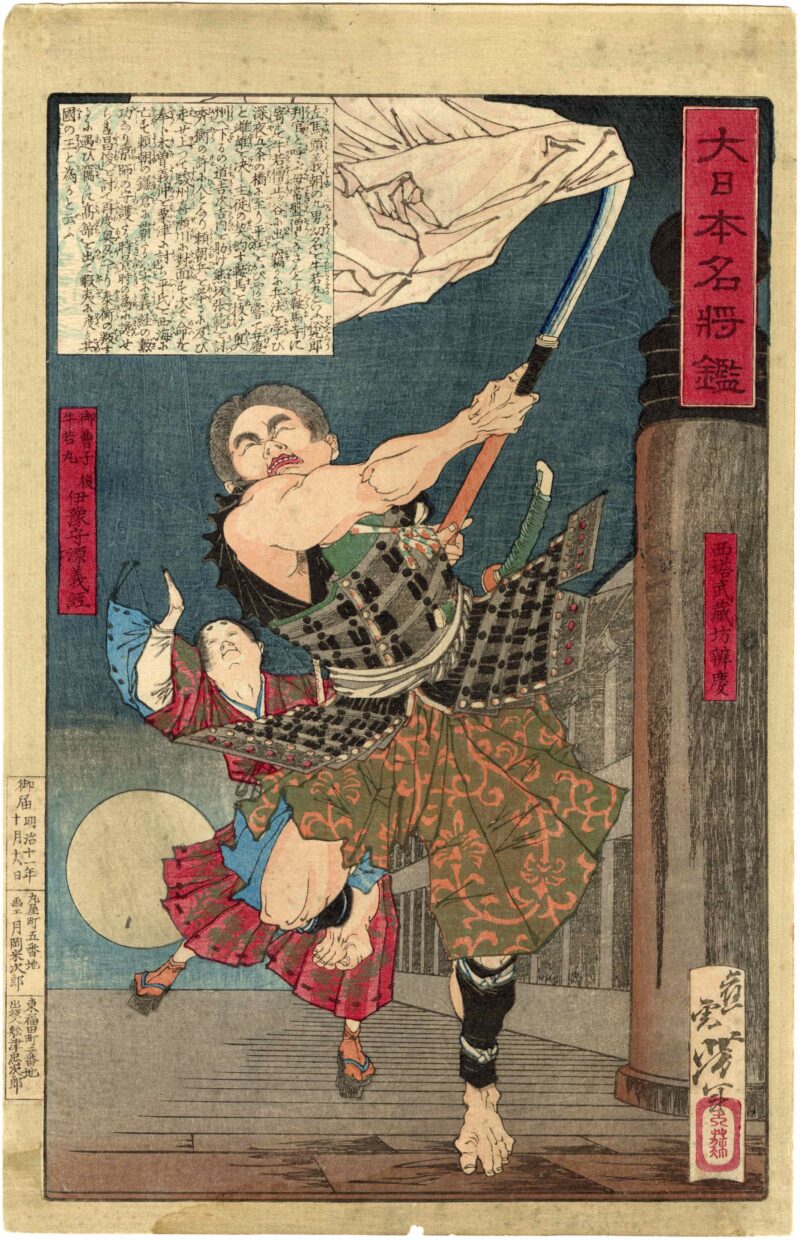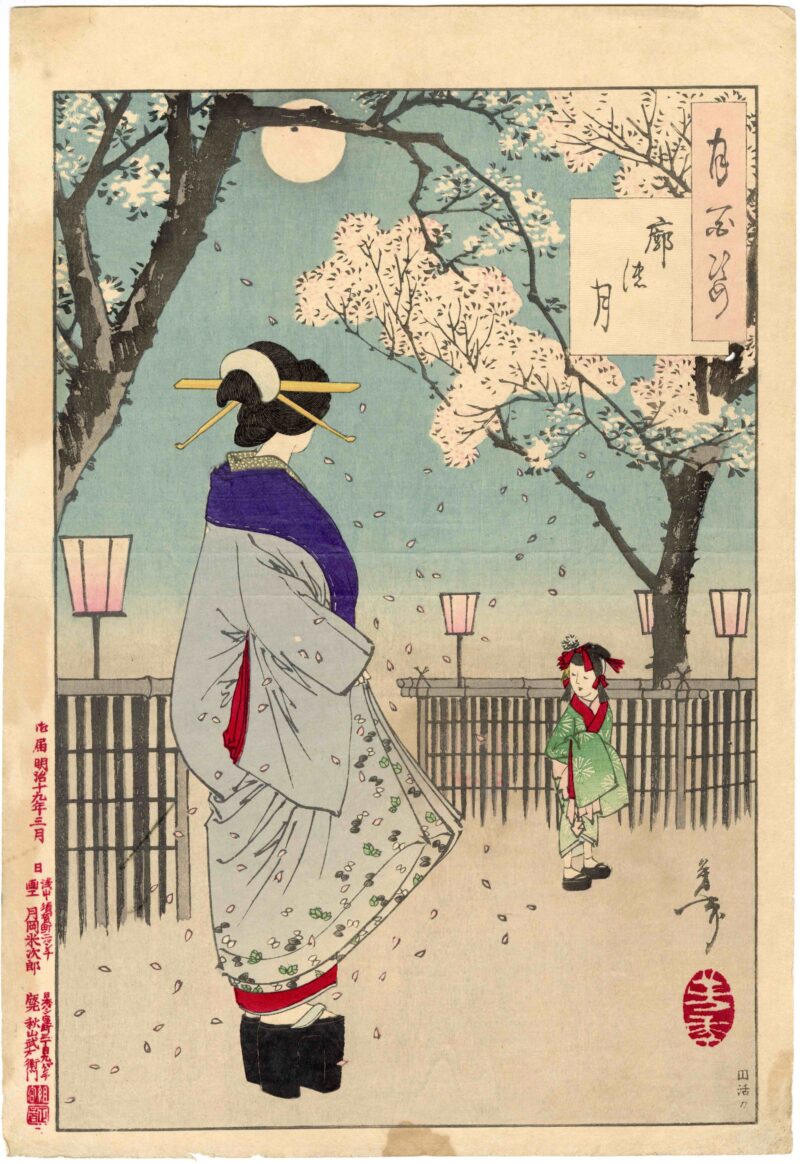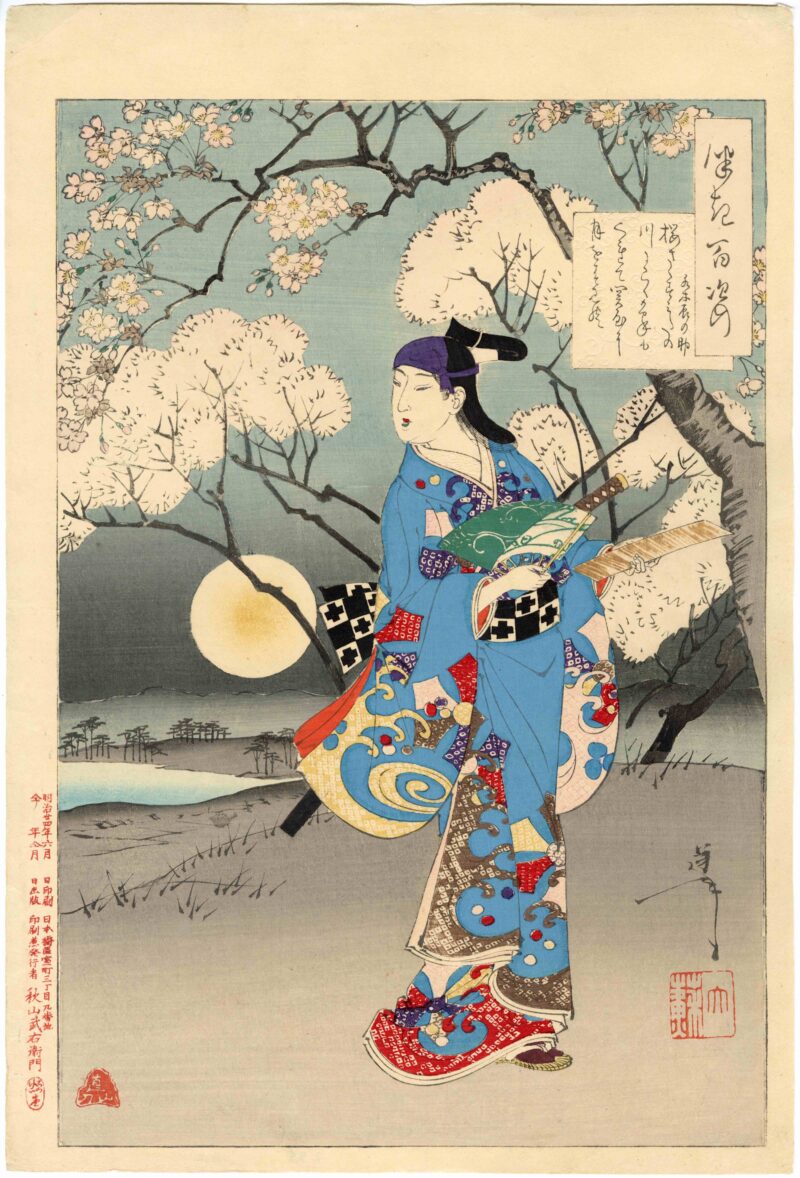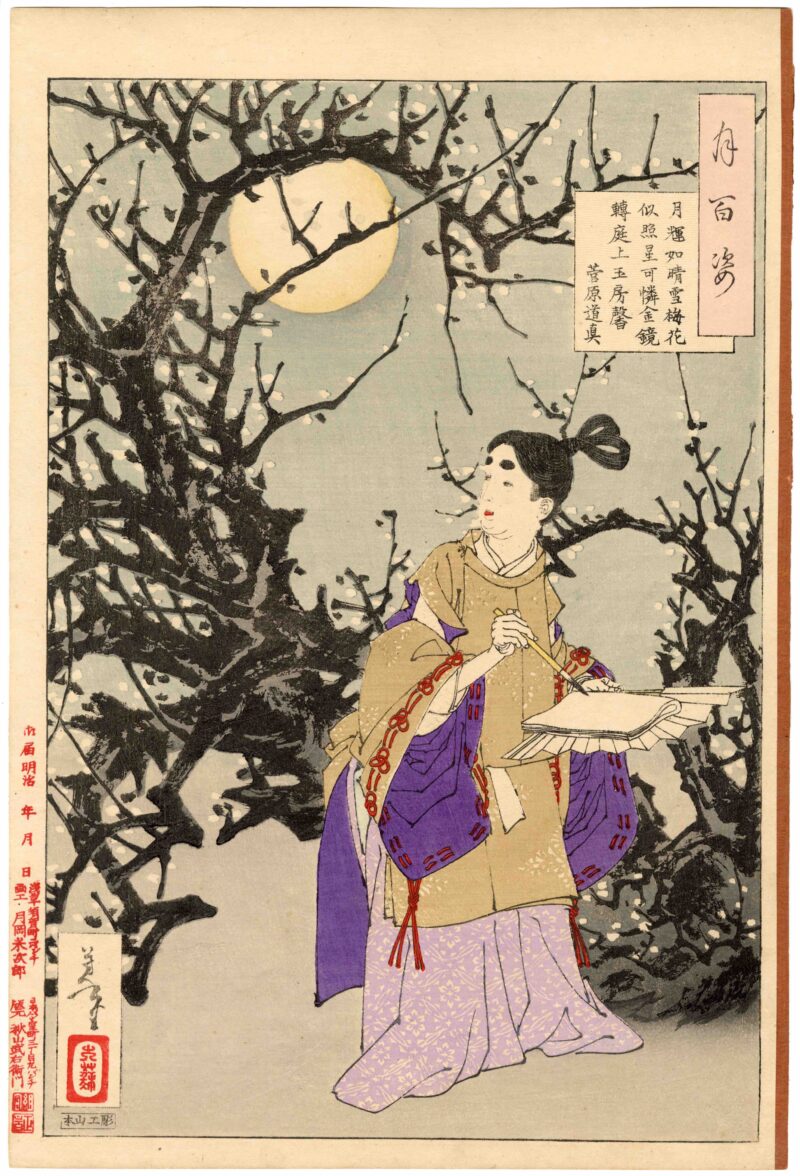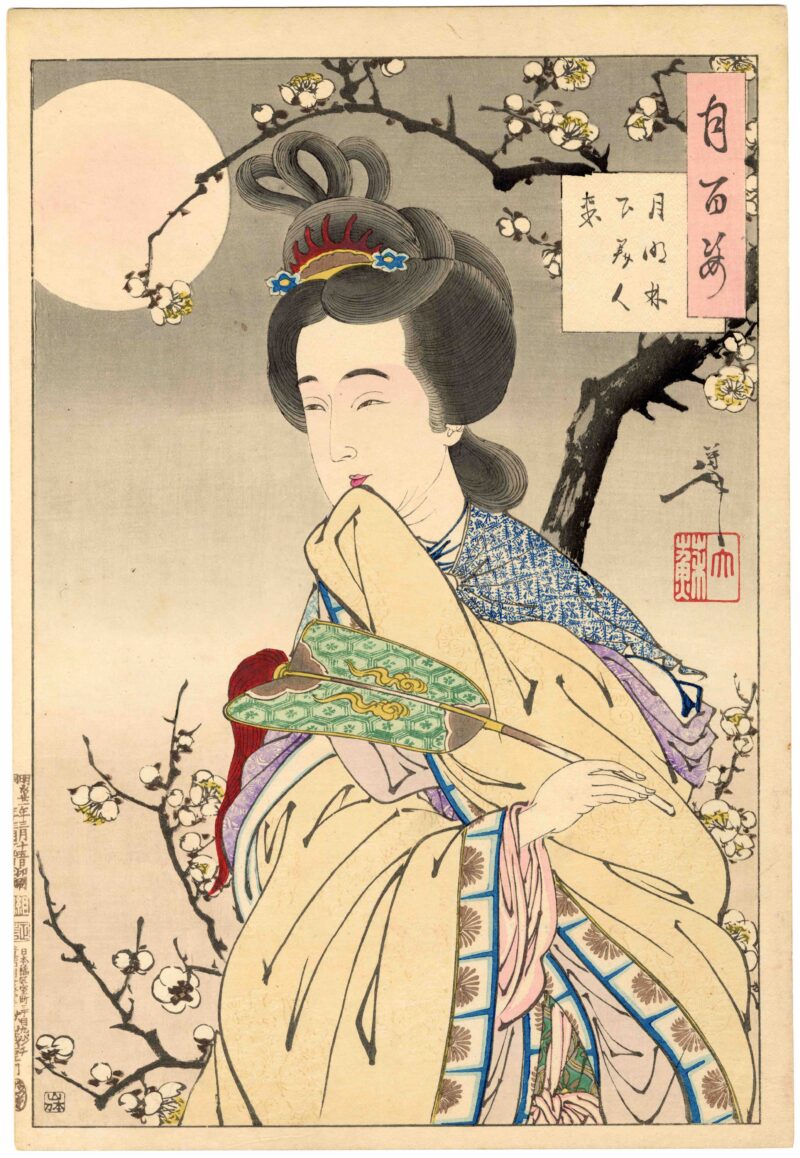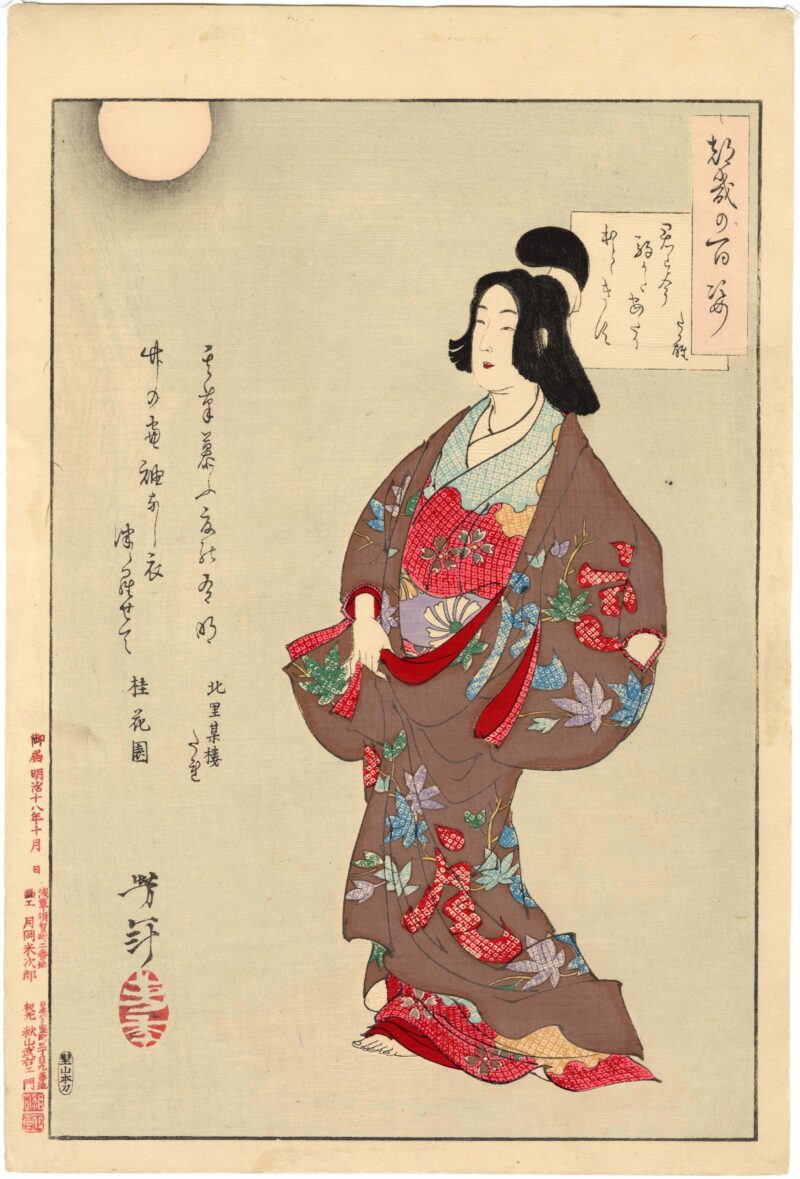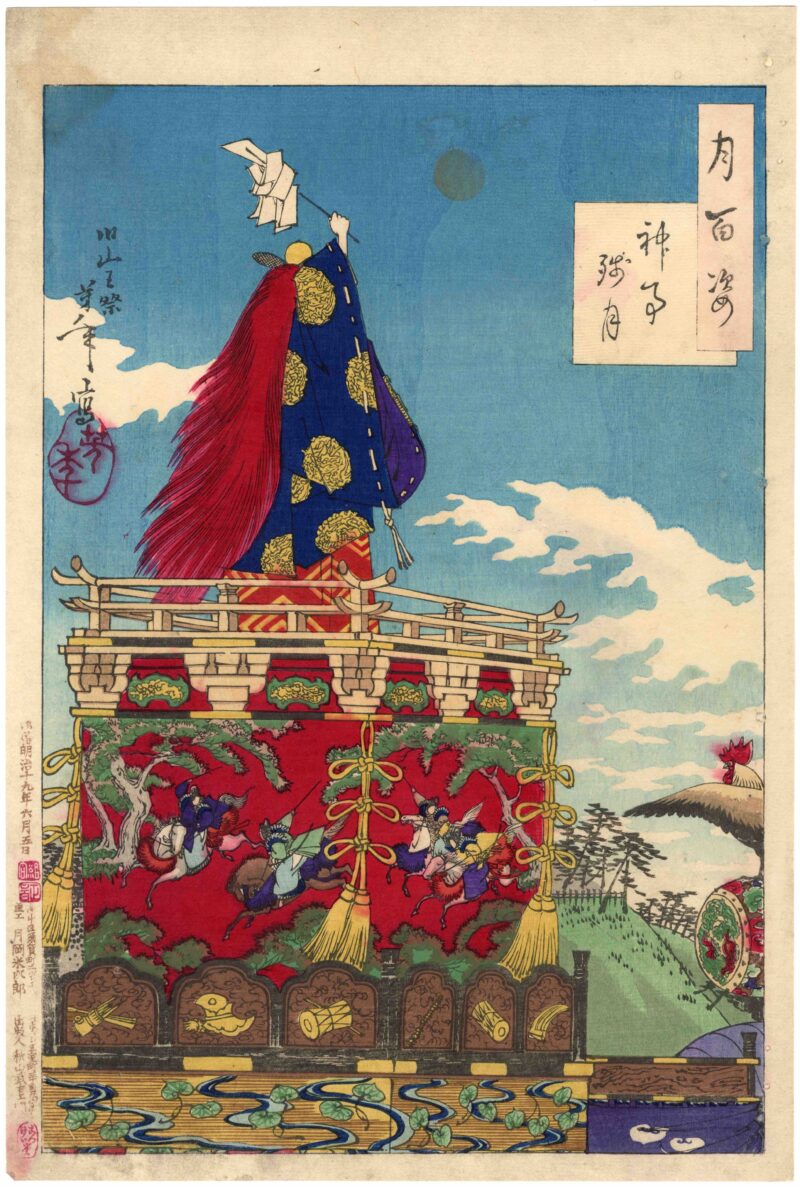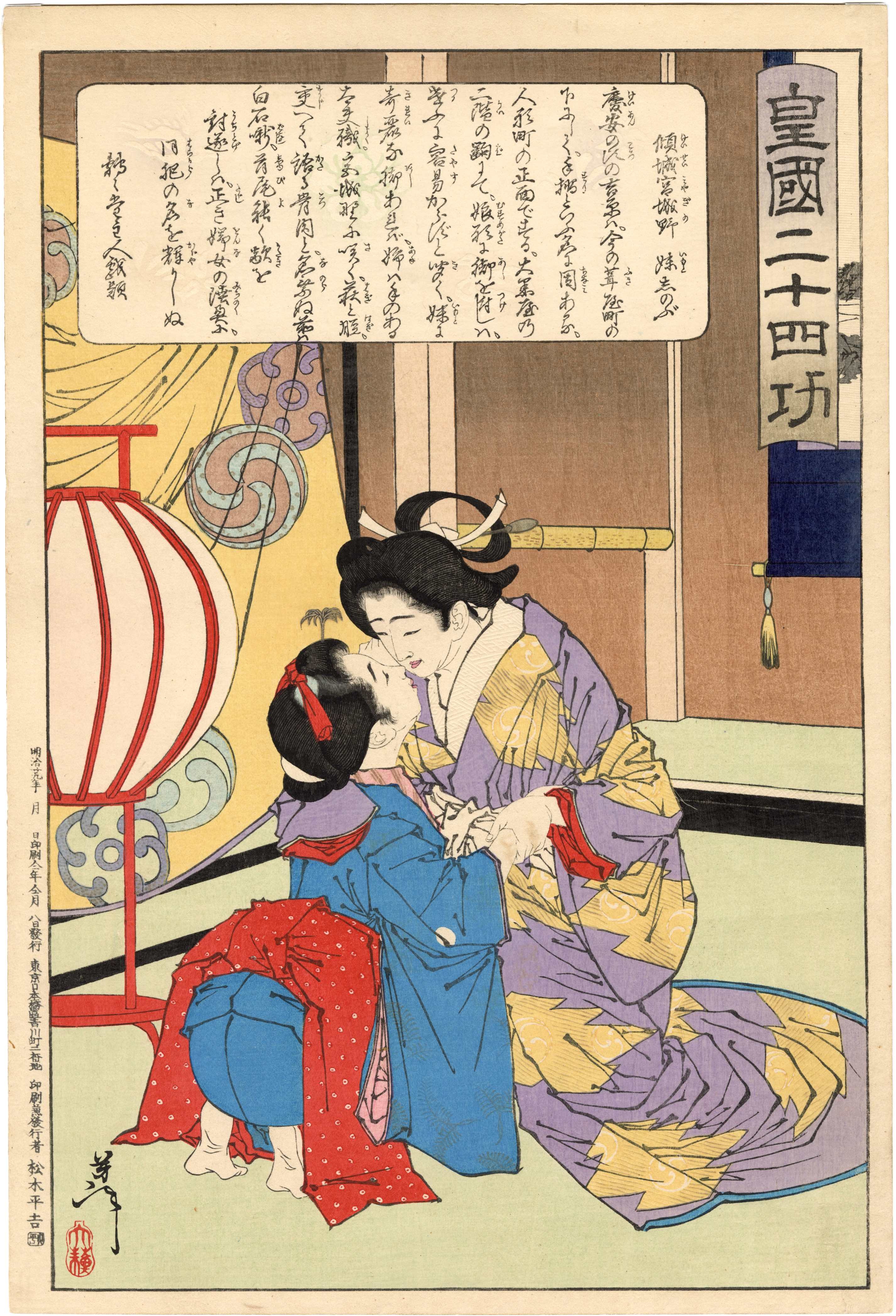- コレクション
- コレクション データベース
- The keisei Miyagino and her Little Sister Shinobu
The keisei Miyagino and her Little Sister Shinobu
Twenty-Four Achievements in the Empire
情報
| タイトル | The keisei Miyagino and her Little Sister Shinobu Keisei Miyagino imoto Shinobu 傾城宮城野妹しのぶ |
| シリーズタイトル | Twenty-Four Achievements in the Empire 皇國二十四功 |
| アーティスト | Tsukioka Yoshitoshi 月岡芳年 (1839–1892) |
| 日にち | 5/1881 (1890s Daikokuya reissue) |
| Uitgever | Daikokuya Matsuki Heikichi (Shōjudō) 大黒屋松木平吉 (松寿堂) |
| 場所 | Tokyo |
| サイン | Yoshitoshi 芳年 |
| 品質形状 | Woodblock print; full colour print; pigment on paper |
| フォーマット | ōban |
| オブジェクト番号 | SH2018-DM-168 |
説明
One of most dramatic accounts of women wielding swords in anger concerns this revenge killing, in which the avengers were the man's two daughters: Miyagino and Shinobu.
Popular accounts of this affair exist in many versions. The factual basis of the story concerns a samurai called Shiga Daishichi, who was on the run because of a misdemeanor and hid in a paddy field, in a village near Shiroishi Banashi in Mutsu Province. By chance, he was observed by a farmer, Yomosaku, who had been transplanting rice seedlings, and in his surprise Shiga Daishichi panicked and killed him. Yomosaku had two daughters, the eldest of whom, Miyagino, had (according to the more romantic versions of the tale) been engaged to be married to a samurai, but through poverty had been sold into prostitution and become a tayū — a sex worker of the highest status — in Yoshiwara, in Edo. The younger daughter, Shinobu, intending to tell her elder sister about her father's death, went to Edo, where she tracked down her sister. They then secretly slipped away from Yoshiwara in order to seek revenge for their father's death, and began to study the martial arts under the guidance of Miyagino's samurai fiancé. They were eager in their pursuit of knowledge, and the result was the vengeance on their father's enemy, Shiga Daishichi, in 1649.
The sisters were determined to carry out the revenge themselves, and the details are largely historical. When the time was ripe, they went through the formalities of asking their daimyō for authorization to avenge the death of their father. There was, in this case, no need for a long search for the enemy, as he had remained in the daimyō's service. The lord accordingly ordered the man to be brought before him to face the girls in combat. Miyagino was armed with a naginata while Shinobu wielded a kusarigama, the sharpened sickle with a long weighted chain. Shiga Daishichi's sword was rendered ineffectual with the aid of the chain, and the other sister finished him off with her naginata.
Stephen Turnbull, The Samurai Swordsman: Master of War, p. 152


